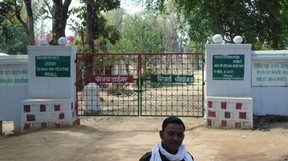
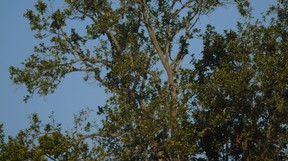 Our first open jeep safari into the park was in the morning after a cool night's stay at Homestay by Banas on the banks of the river. Ajeet Mishra the owner of the homestay and Subash Singh the energetic naturalist full of enthusiasm accompanied us. The drive from the homestay to Dubri Gate is picturesque and goes through the tall stand of Sal. Safaris are not very popular here it seems with most of the visitors to MPTDC Lodge interested in recreation rather than a wild safari.
Our first open jeep safari into the park was in the morning after a cool night's stay at Homestay by Banas on the banks of the river. Ajeet Mishra the owner of the homestay and Subash Singh the energetic naturalist full of enthusiasm accompanied us. The drive from the homestay to Dubri Gate is picturesque and goes through the tall stand of Sal. Safaris are not very popular here it seems with most of the visitors to MPTDC Lodge interested in recreation rather than a wild safari.
We were expecting a lifeless Bengal tiger safari but much to our surprise the forests were live with action. The soft jungle roads were littered with pug marks and the jungle sound included raucous alarm cries, all signs of a robust tiger presence. The network of picturesque streams, small water holes and thick forests, and vegetation all around adds to the thrill of the drive serenity included. The tiger reserve accorded an esoteric experience.
It did not take us long to find the big cat ensconced cozily in tall reed beds on a scantily inundated stream. The continuous alarms of the macaque had alerted us and the monkey was looking down at the stream full of reed and grass. We preened through the grass and reeds till we were locked down on that precious speck of white reflecting the sunlight. That was the tiger!
" At least a cousin of the white tiger", I said. "We are not going to go back empty-handed," I said gleefully.
The ride was pleasant with plenty of deer and antelope coming across our way. A sounder came really close to our jeep surprised perhaps. The Hanuman langurs, spotted deer, and peacocks are a common sight. Leopard sighting is less frequent but sloth bears are seen frequently in the park.
A proper bird survey has not taken place but Subhash has done commendable work.


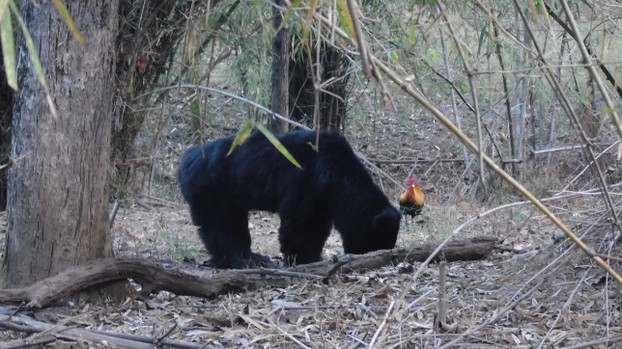
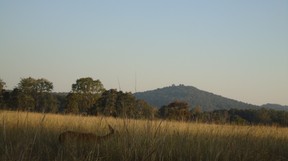 "It was discovered in a remote cave in these jungles. Among the group of four cubs one was white". The hunting party returned with the cub and presented it to the erstwhile Maharajah of Rewa a district of Madhya Pradesh State in Central India.
"It was discovered in a remote cave in these jungles. Among the group of four cubs one was white". The hunting party returned with the cub and presented it to the erstwhile Maharajah of Rewa a district of Madhya Pradesh State in Central India. 


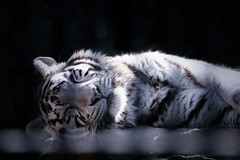



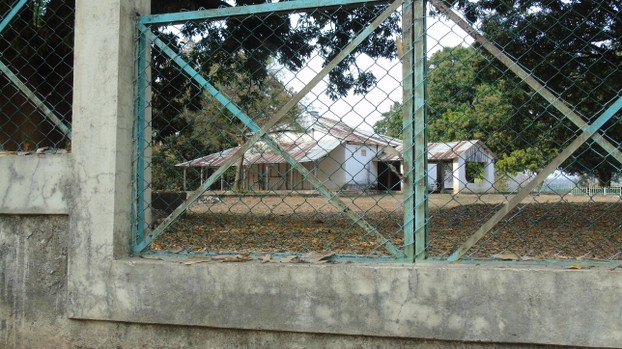
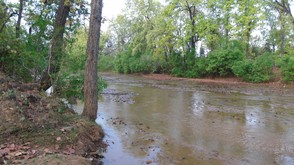
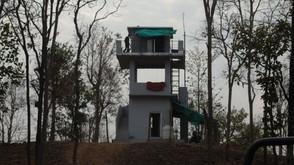
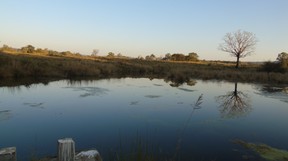 Ironically, these majestic tracts of Sal tropical forests survived from plunder being private hunting reserves of Maharajahs out of bounds to trigger happy locals and wood loggers. Sanjay Dubri it seems was the most cherished private hunting reserve of Maharajah of Rewa Martand Singhji, an estate with the largest landholding in India.
Ironically, these majestic tracts of Sal tropical forests survived from plunder being private hunting reserves of Maharajahs out of bounds to trigger happy locals and wood loggers. Sanjay Dubri it seems was the most cherished private hunting reserve of Maharajah of Rewa Martand Singhji, an estate with the largest landholding in India. 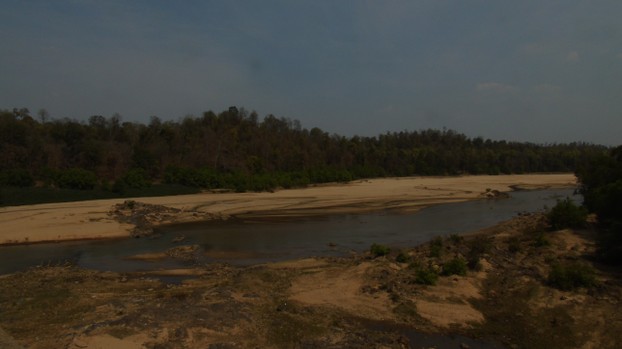
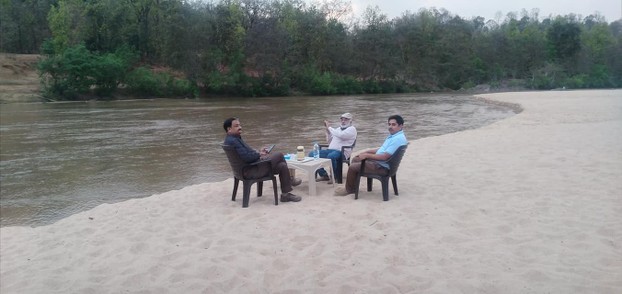

 Our first open jeep safari into the park was in the morning after a cool night's stay at Homestay by Banas on the banks of the river. Ajeet Mishra the owner of the homestay and Subash Singh the energetic naturalist full of enthusiasm accompanied us. The drive from the homestay to Dubri Gate is picturesque and goes through the tall stand of Sal. Safaris are not very popular here it seems with most of the visitors to MPTDC Lodge interested in recreation rather than a wild safari.
Our first open jeep safari into the park was in the morning after a cool night's stay at Homestay by Banas on the banks of the river. Ajeet Mishra the owner of the homestay and Subash Singh the energetic naturalist full of enthusiasm accompanied us. The drive from the homestay to Dubri Gate is picturesque and goes through the tall stand of Sal. Safaris are not very popular here it seems with most of the visitors to MPTDC Lodge interested in recreation rather than a wild safari. 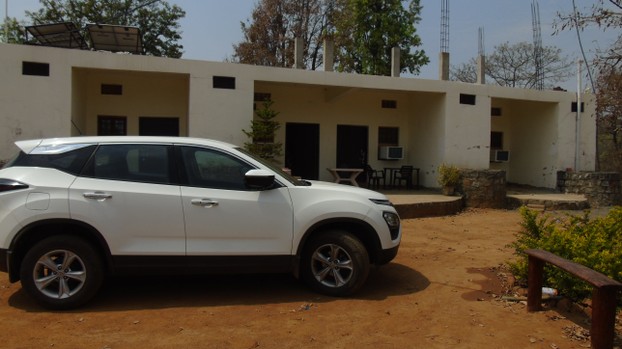
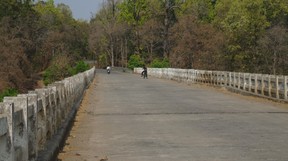 There are only two accommodations available at Sanjay National Park. The one we stayed at is called Home by Banas! The second is the busy MPTDC Resort.
There are only two accommodations available at Sanjay National Park. The one we stayed at is called Home by Banas! The second is the busy MPTDC Resort. 

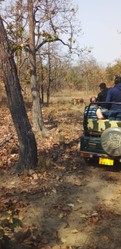

 Full Day Safari in Bandhavgarhon 08/29/2023
Full Day Safari in Bandhavgarhon 08/29/2023
 SEO Campaign: Website Overhaulon 02/13/2023
SEO Campaign: Website Overhaulon 02/13/2023
 Indian Food It Is Not All Curryon 02/08/2023
Indian Food It Is Not All Curryon 02/08/2023
 How Tiger Tourism is Organized in India?on 02/07/2023
How Tiger Tourism is Organized in India?on 02/07/2023

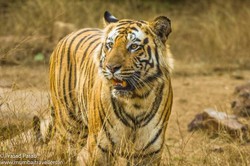
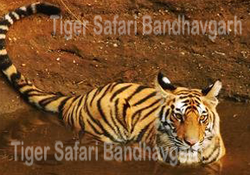
Comments
Every this is same between normal colored tiger and white tiger. Except the recessive gene which alternates to white coloration.
Is survival to adulthood the same as or lower than for other tigers?
Each tiger has a unique coat with stripe pattern being different. Yes that is red jungle fowl behind sloth bear. The tiger is normal colored and at present no sightings of white tiger has taken place after Mohun was discovered. The probability of white tiger cub being born in one in ten thousand births.
pateluday, Thank you for practical information, pretty pictures and product lines.
Is that a red junglefowl in the background of your image of the sloth bear?
At the stream reed beds, was it a regular tiger looking white what with the combination of reflected light, sunlight and tiny patch of yellow coat scarcely visible or were you all blessed with a white tiger presence?
I wonder what tiger family and peers think of a white rarity since aren't coat patterns individual and one way of recognizing one another?